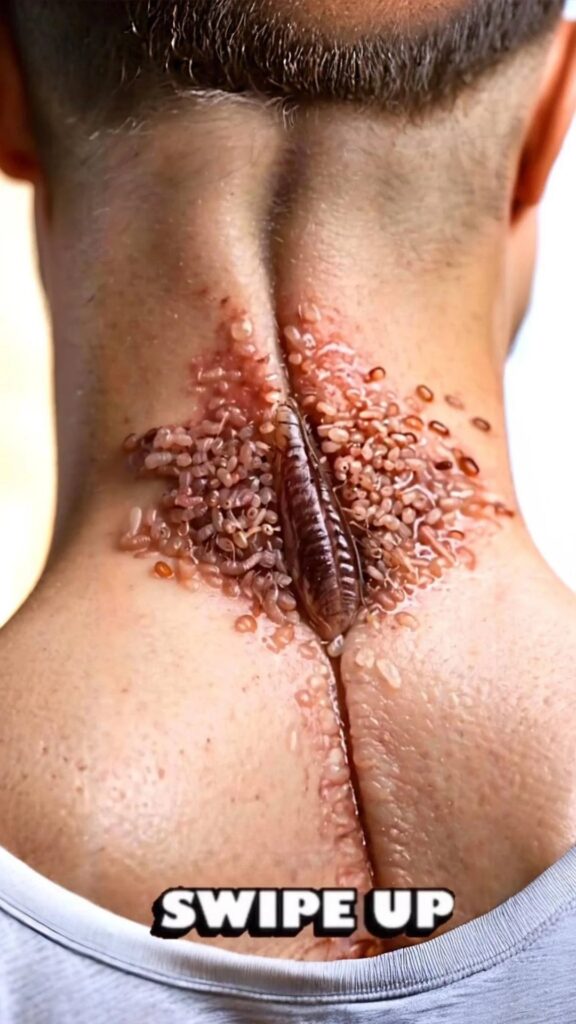
Our skin is often referred to as a “window to our health.” It can provide essential clues about underlying medical conditions, indicating everything from minor irritations to serious diseases. Understanding these skin signals can help in early diagnosis and treatment, potentially saving lives. This article explores various skin conditions and their possible implications, shedding light on when it’s essential to consult a healthcare professional.
1. Dark Spots: A Sign of Addison’s Disease
Dark spots on the skin, particularly in areas exposed to sunlight, can sometimes be a warning sign of Addison’s disease. This condition occurs when the adrenal glands do not produce enough hormones, particularly cortisol.
Symptoms and Diagnosis
In addition to darkening of the skin, other symptoms may include:
Fatigue
Weight loss
Low blood pressure
Salt cravings
Muscle weakness
If you notice new dark spots or changes in existing ones, it’s important to seek medical advice. A doctor may conduct blood tests to check hormone levels and assess adrenal function.
Treatment Options
Treatment typically involves hormone replacement therapy to manage cortisol levels. With proper treatment, individuals with Addison’s disease can lead healthy lives.
2. Discoloration: White Patches and Vitiligo

White patches on the skin may indicate vitiligo, a condition where the skin loses pigment cells, leading to uneven skin tone.
Causes and Risk Factors
The exact cause of vitiligo is not fully understood, but it is believed to be an autoimmune disorder. Risk factors may include:
Family history
Other autoimmune diseases
Sunburn or skin trauma
Symptoms and Diagnosis
Apart from white patches, individuals may also experience premature graying of hair or loss of color in the mucous membranes. Diagnosis usually involves a physical examination and, in some cases, a biopsy.
Management and Treatment
While there is no cure for vitiligo, treatments may help improve skin appearance, such as:
Topical corticosteroids
Light therapy
Skin camouflage techniques
3. Rashes: When to Seek Medical Evaluation

Persistent rashes can signify various underlying health conditions, ranging from allergies to infections or autoimmune diseases.
Common Types of Rashes
Eczema: Characterized by itchy, inflamed skin.
Psoriasis: Presents as red patches with silvery scales.
Contact dermatitis: Caused by contact with irritants or allergens.
Importance of Evaluation
If a rash persists for more than a few days or is accompanied by other symptoms (such as fever or swelling), it is crucial to seek medical evaluation. A doctor may perform skin tests or blood tests to determine the cause.
Treatment Options
Treatment for rashes depends on the underlying cause. Options may include:
Topical medications
Antihistamines
Systemic therapies for severe conditions
4. Edemas: Daily Swelling and Hypothyroidism

Daily swelling, known as edema, can occur for various reasons, including fluid retention. When accompanied by other symptoms, it may suggest hypothyroidism.
Understanding Hypothyroidism
Hypothyroidism occurs when the thyroid gland does not produce enough thyroid hormones. Symptoms may include:
Weight gain
Fatigue
Sensitivity to cold
Dry skin and hair
Diagnosis and Management
Diagnosis typically involves blood tests measuring thyroid hormone levels. If hypothyroidism is confirmed, treatment often includes hormone replacement therapy.
5. Moles: Rapid Changes Require Attention
Changes in moles can be a red flag for skin cancer, specifically melanoma.
Warning Signs of Melanoma
Monitor moles for the following changes:
Asymmetry
Irregular borders
Variation in color
Diameter larger than a pencil eraser
Evolving in size, shape, or color
Importance of Regular Skin Checks
Regular self-examinations and dermatologist visits are crucial for early detection. If you notice rapid changes in a mole, consult a healthcare professional immediately.
Treatment Options for Melanoma
If diagnosed with melanoma, treatment options may include:
Surgical removal
Immunotherapy
Radiation therapy
Chemotherapy
6. Acne: When to Consult a Doctor

While acne is common among teenagers, persistent or severe acne may indicate underlying hormonal issues or other medical conditions.
Possible Causes of Persistent Acne
Hormonal changes (such as polycystic ovary syndrome)
Stress
Diet
Seeking Medical Advice
If over-the-counter treatments fail to improve your acne, consult a dermatologist. They may prescribe topical or oral medications tailored to your specific needs.
Treatment Options
Treatment options for acne may include:
Topical retinoids
Antibiotics
Hormonal therapies
7. Flaking Skin: A Sign of Serious Conditions
Severe flaking of the skin can be more than just a cosmetic issue. It may indicate conditions such as psoriasis, eczema, or even fungal infections.
Identifying the Cause
In addition to flaking, look for other symptoms such as:
Redness
Itching
Pain
Importance of Medical Evaluation
If flaking is accompanied by other concerning symptoms, seek medical evaluation. A dermatologist can perform tests to diagnose the condition accurately.
Management and Treatment
Depending on the diagnosis, treatment options may include:
Moisturizers and emollients
Topical corticosteroids
Antifungal creams
8. Excessive Sweating: Could Signal Graves’ Disease

Excessive sweating, or hyperhidrosis, may be more than just an uncomfortable condition. It can signal underlying issues such as Graves’ disease, an autoimmune disorder that affects the thyroid.
Symptoms of Graves’ Disease
In addition to excessive sweating, other symptoms may include:
Rapid heartbeat
Weight loss
Nervousness or anxiety
Heat intolerance
Diagnosis and Evaluation
A healthcare professional may perform blood tests to measure thyroid hormone levels and assess thyroid function.
Treatment Options
Treatment for Graves’ disease may include:
Antithyroid medications
Radioactive iodine
Surgery
Importance of Seeking Medical Advice
While many skin conditions may seem minor, they can be indicators of serious underlying diseases. Early diagnosis and treatment are crucial in managing health effectively. Always consult a healthcare professional if you notice any unusual skin changes or persistent symptoms.
FAQs
1. What are dark spots on the skin a sign of?
Dark spots may indicate Addison’s disease or other conditions related to hormone imbalance.
2. How can I tell if my mole is changing?
Monitor for asymmetry, irregular borders, color variations, or changes in size or shape. If any of these changes occur, consult a doctor.
3. What should I do if I have persistent acne?
If over-the-counter treatments are ineffective, consult a dermatologist for tailored treatment options.
4. What does severe skin flaking indicate?
Severe flaking can indicate conditions such as psoriasis, eczema, or fungal infections. Medical evaluation is advised.
5. When should I seek medical help for skin issues?
Consult a healthcare professional for any unusual skin changes, persistent rashes, or symptoms that cause concern. Early intervention is crucial for effective treatment.


